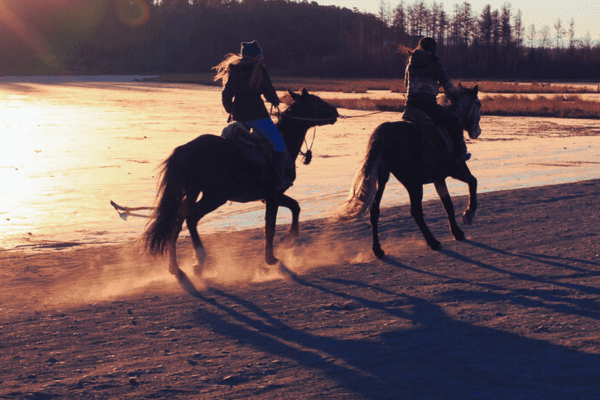The Baikal Horse, a unique equine variety hailing from the vicinity of Lake Baikal on the borders of Mongolia, stands as a testament to ecological adaptability and human ingenuity. This horse, often characterized more as a distinct type than a traditional breed, showcases a remarkable capacity to fulfill a wide array of roles required by the local populace, thriving in a region known for its rigorous environmental conditions.
History:
The Baikal Horse, with an equally mysterious past as its Siberian homelands it inhabits, is widely thought to have evolved from Mongolian horses. While detailed historical documentation is limited, physical similarities such as stocky builds and robust legs suggest genetic ties with Mongolian equines; which may account for its evolution into this breed.
Geographic proximity between Lake Baikal region and Mongolia and historical migration patterns both support this hypothesis as does lack definitively tracing it back.
These horses, distinguished by their smaller stature and endurance, have been formed by nature in Siberia. Not just the product of selective breeding but shaped by harsh weather conditions and challenging terrains – such as long winters with no vegetation – this breed’s hardiness speaks for itself.
Over centuries, this breed has not only adapted to Siberia’s harsh climate but has become an integral part of local culture and economy. Their ability to thrive where other breeds might falter has made the Baikal Horse an invaluable companion in this distant land.
Although its exact historical roots remain obscure, the Baikal Horse stands as an incredible testament to adaptability and survival in an environment rife with environmental challenges. These horses serve as living examples of nature’s ability to thrive despite daunting environmental constraints.
Physical Characteristics of Baikal Horses:
This hardy creature, famed for its adaptability in harsh climates, shows several distinct physical characteristics. These include:
Size and Build: Baikal Horses tend to be smaller in stature, compact and muscular creatures adapted for survival in environments with limited resources allowing them to maintain body heat more efficiently while traversing rough terrains with agility.
Coat: One of the most striking characteristics of Siberian Wolves is their thick and dense coat, which acts as insulation against extreme winter cold. It changes thickness and color throughout the year – becoming heavier during winter and lighter during summer.
Legs and Hooves: Wild horses possess strong, sturdy legs and hard hooves that enable them to traverse Siberian landscapes easily and comfortably, providing stability and endurance when traversing uneven terrain. Their robust construction provides stability in harsh terrain.
Mane and Tail: Baikal Horses typically feature thick manes and tails to provide additional protection from the elements, with bushy manes helping shield against wind and cold.
Head and Neck: Baikal Horses have well-proportioned heads with straight profiles that feature strong neck muscles to allow efficient foraging in snow-covered environments. Their strong build provides them with the strength needed to perform these duties effectively.
Temperament: Physically, they exhibit a peaceful and even temperament which likely evolved as an effective survival mechanism in their challenging environment. This trait contributes to hardiness and stress resistance.
Adaptation Features: Beyond these characteristics, Baikal Horses may also possess other subtle physical traits which allow them to conserve energy, process sparse vegetation quickly and maintain proper hydration levels during freezing temperatures.

Recent Developments:
Recently, the Baikal Horse has garnered widespread acclaim as an impressive endurance riding horse breed. Their stamina and ability to traverse challenging terrain make them perfect competitors, as do conservation efforts to safeguard this unique breed that faces threats from environmental changes and modernization.
The Baikal Horse stands as an emblematic example of nature’s ability to shape life within challenging environments, embodying survival, adaptability and an unbreakable bond with Siberian residents; becoming not just another breed but a living piece of cultural heritage.

